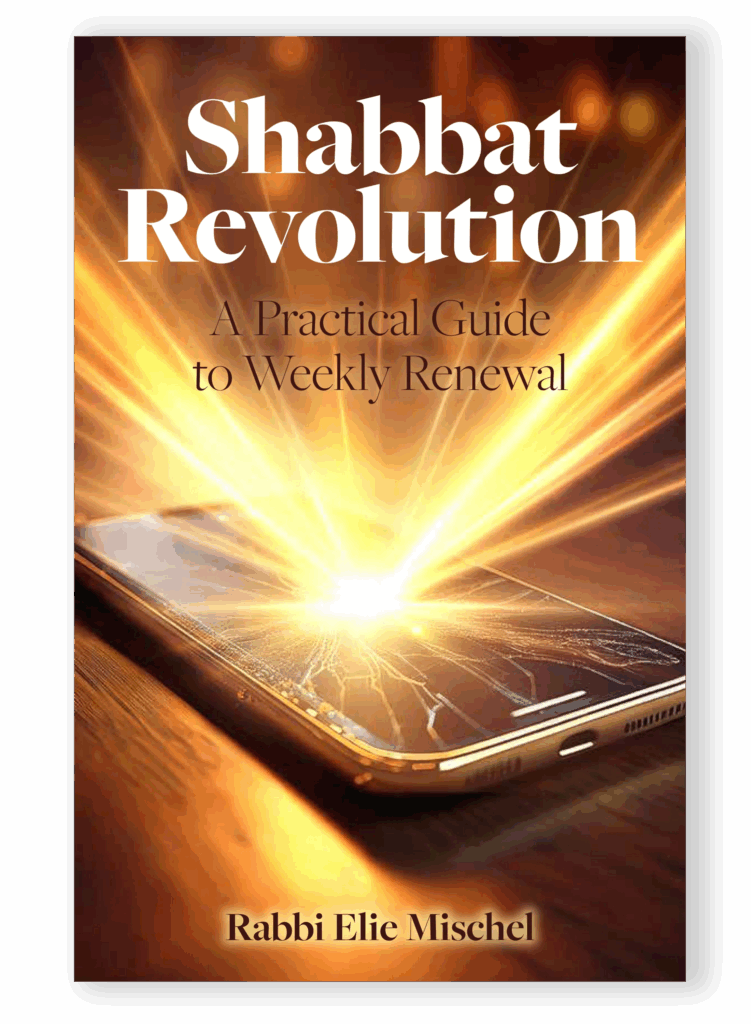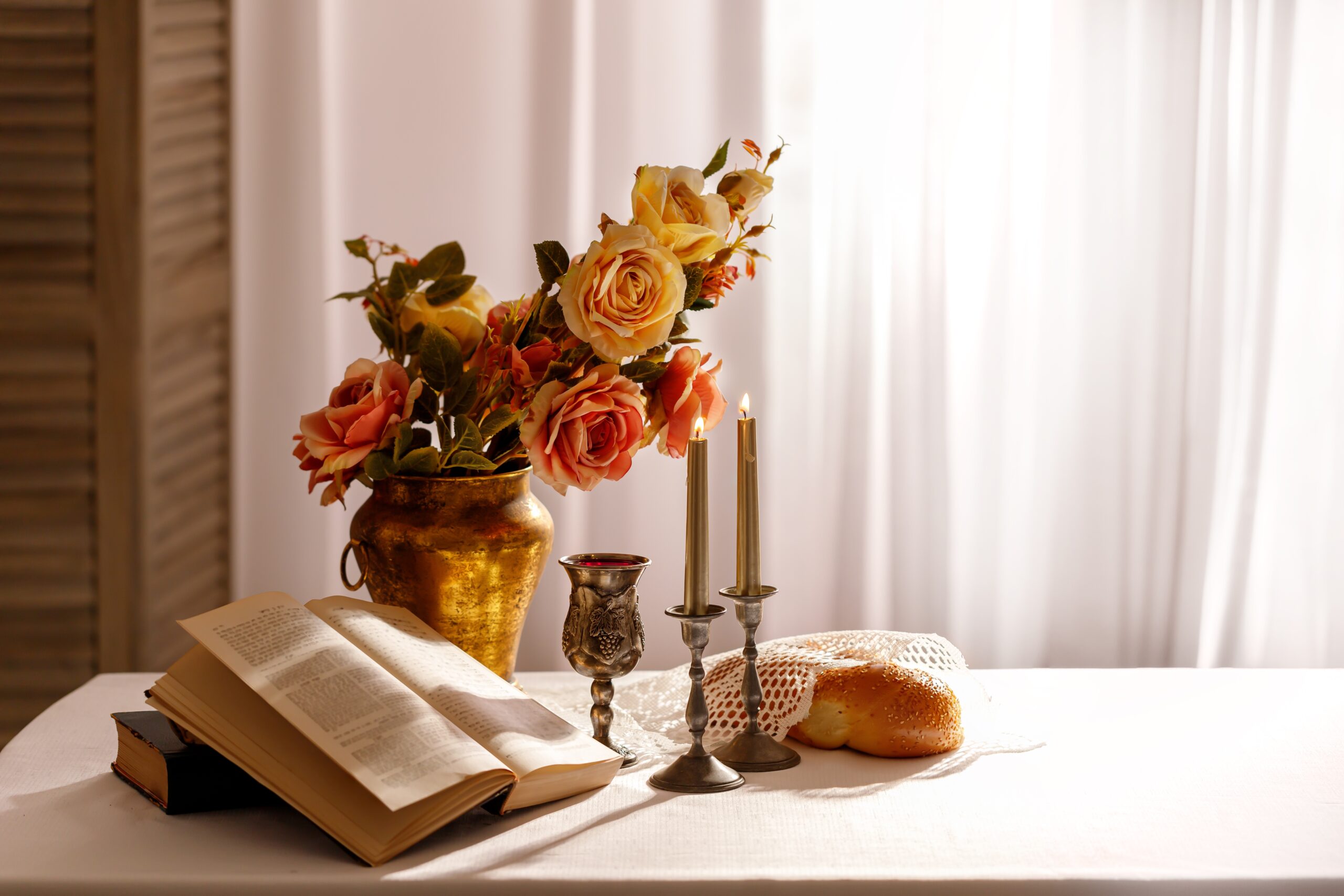In a world of constant connectivity and increasing burnout, many Christians are discovering the biblical practice of Shabbat as a transformative weekly reset. While Sunday remains the primary day of worship for Christians, a growing movement is exploring the Hebrew roots of their faith by incorporating elements of traditional Jewish Shabbat observance into their lives.
A new book, “Shabbat Revolution: A Practical Guide to Weekly Renewal,” written by Rabbi Elie Mischel, Director of Education at Israel365, offers accessible wisdom for bringing Shabbat’s renewal into modern Christian life.
“This isn’t about changing anyone’s faith tradition,” explains Rabbi Mischel. “It’s about reconnecting with biblical practices that can deepen one’s existing relationship with God while providing much-needed rest in our hectic world.” To discover Rabbi Mischel’s complete guidance on bringing the peace of Shabbat into your life, click here to purchase “Shabbat Revolution” now.
Here are seven transformative Shabbat practices that can renew your spiritual life and bring sacred rhythm to your week:
1. Prepare on Friday to Receive the Holiness of Shabbat
The concept of preparation lies at the heart of a meaningful Shabbat experience. Just as the Israelites gathered double portions of manna on Friday to prepare for Shabbat (Exodus 16:5), setting aside time to prepare creates sacred anticipation in your home and heart.
As Friday afternoon unfolds, begin intentionally transitioning from your work week. Clean your living spaces, prepare special meals in advance, and set your table with care. These preparations aren’t merely practical—they’re spiritual acts that begin shifting your consciousness from the mundane to the sacred. As you prepare, you create space in both your home and your heart to receive the gift of sacred time.

2. Welcome Shabbat with Candle Lighting
As sundown approaches on Friday evening, the lighting of candles marks the sacred threshold between ordinary time and Shabbat. Light candles in the room where you’ll share your Shabbat meal, allowing their warm glow to illuminate your gathering space.
This simple yet profound act recalls God’s first creative words: “Let there be light.” The physical light of the candles represents the spiritual illumination that Shabbat brings into our homes and hearts. As you light them, pause for a moment of silent prayer or gratitude. Let the gentle flames remind you of God’s presence and the peace that Shabbat offers to all who welcome it.
3. Bless Your Children & Grandchildren
Of all the beautiful rituals that grace the Shabbat table, perhaps none is more moving than the blessing of children. This sacred moment creates a weekly opportunity for parents to transmit love, values, and spiritual connection to the next generation.
The practice has deep biblical roots. When Jacob was about to die, he called his grandsons Ephraim and Manasseh to his bedside and blessed them (Genesis 48:20). Every Friday night, Jewish parents place their hands on their children’s heads, creating a powerful channel for transferring love and spiritual energy to their children.
This physical connection, combined with words of blessing, forms one of the most treasured moments of Shabbat. The simple act of placing your hands on a child’s head and speaking words of blessing creates a sacred bond that both parent and child carry throughout their lives. Even as children grow older, this moment of connection remains meaningful, creating an unbroken chain of love and blessing across generations.
4. Make Your Table an Altar for Family Connection
In Jewish tradition, the dining table is compared to the altar in the Temple. When we gather around our tables with intention and reverence, ordinary meals become sacred experiences of connection and communion.
Create a beautiful setting with your finest tablecloth, dishes, and perhaps fresh flowers or other decorative touches. The beauty of your table helps everyone gathered feel the unique joy and sanctity of Shabbat. Just as the Temple altar was prepared with care before offerings were brought, your table preparation becomes an act of dedication.

Place two loaves of bread on your table, recalling the double portion of manna that sustained the Israelites in the wilderness. Begin your meal with blessings over wine and bread, acknowledging God as the source of all sustenance. Then, allow conversation to flow naturally around your table. Ask meaningful questions that invite reflection and genuine sharing. Listen deeply to one another. In these unhurried moments of authentic connection, your table truly becomes an altar where hearts are nourished alongside bodies.
5. Create Sacred Space Through Digital Disconnection
In our hyper-connected world, one of the most powerful ways to experience Shabbat’s holiness is through mindful disconnection from technology. This practice isn’t about rigid restriction but about creating freedom to be fully present with God, loved ones, and your own soul.
Consider setting aside your phones, computers, and other devices as Shabbat begins on Friday evening. This creates space for genuine presence and connection that our technology-saturated lives often lack. Without the constant interruption of notifications and the pressure to respond immediately, conversations deepen, awareness heightens, and we rediscover the gift of being fully present.
This disconnection isn’t about deprivation but about abundance—creating room for the deeper pleasures of unhurried meals, meaningful conversation, and spiritual renewal. Even a partial practice, perhaps just during meal times to start, can open unexpected doors to spiritual refreshment and human connection.
6. Set Aside Time for Bible Study
“This Book of the Law shall not depart from your mouth, but you shall meditate on it day and night” (Joshua 1:8). While this biblical command applies throughout the week, Shabbat provides a unique opportunity for deeper engagement with Scripture. Free from work responsibilities and technological distractions, we can finally give God’s Word the focused attention it deserves.
Many people choose to read the weekly Torah portion, connecting them to a global rhythm of Scripture reading that has continued for thousands of years. Others might study a different part of the Bible, explore a devotional book, or simply meditate on a single powerful verse. The key is that this study differs from our usual rushed reading—it becomes contemplative, unhurried, an opportunity to dive deep into meaning.

This time of study can be personal or shared with family and friends. Some of the richest moments of Shabbat come when insights are exchanged around the table, allowing Scripture to become a living presence in our conversations and relationships. As the Psalmist wrote: “Oh, how I love your law! I meditate on it all day long” (Psalm 119:97).
7. End Shabbat Mindfully with Havdalah
Just as we mark the beginning of Shabbat with intention, we honor its conclusion with a beautiful ceremony called Havdalah (meaning “separation”). This ritual helps us carry Shabbat’s peace and perspective into our regular week rather than rushing back into everyday consciousness.
As darkness falls on Saturday evening, gather a multi-wicked candle, some fragrant spices, and a cup of wine or grape juice. The braided candle represents the intertwining of the holy and ordinary as we move back into the week. The spices offer comfort as Shabbat departs, their sweetness lingering as a reminder of the day’s holiness. The wine symbolizes the joy we carry forward.
This simple yet profound ceremony teaches us that endings can be as sacred as beginnings. As you extinguish the Havdalah candle in the wine, you create a gentle transition back into your regular activities, carrying something of Shabbat’s light with you into the new week.
Start Small, Build Gradually
Rabbi Mischel emphasizes that incorporating Shabbat practices doesn’t require adopting everything at once. “Start with one practice that resonates with you—perhaps the candle lighting or a special meal—and build from there,” he advises. “The goal isn’t perfect observance but creating meaningful moments of sacred time.”
As burnout rates soar and digital distraction fragments our attention, these ancient practices offer a path to weekly renewal. Whether observed on Saturday in connection with Jewish roots or adapted to complement Sunday worship, these Shabbat practices provide a powerful antidote to the culture of constant productivity, creating space for what truly matters: our relationship with God and with each other. Ready to transform your week with these practices? Click here to get your copy of “Shabbat Revolution” today!
“Shabbat Revolution: A Practical Guide to Weekly Renewal” by Rabbi Elie Mischel is available now through Israel365 Publishing. For Christians seeking to deepen their faith through these ancient biblical practices, this book offers detailed guidance, beautiful explanations, and practical wisdom that goes far beyond what we’ve covered here. Each chapter explores the biblical foundations and spiritual significance of these practices while providing clear, step-by-step instructions for implementation. Whether you’re just beginning to explore the Hebrew roots of your faith or looking to deepen your existing Shabbat practice, this groundbreaking guide will transform your understanding of sacred time and weekly renewal.





